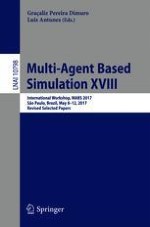2018 | OriginalPaper | Chapter
Developing Multi-agent-based Thought Experiments: A Case Study on the Evolution of Gamete Dimorphism
Authors : Umit Aslan, Sugat Dabholkar, Uri Wilensky
Published in: Multi-Agent Based Simulation XVIII
Publisher: Springer International Publishing
Activate our intelligent search to find suitable subject content or patents.
Select sections of text to find matching patents with Artificial Intelligence. powered by
Select sections of text to find additional relevant content using AI-assisted search. powered by
